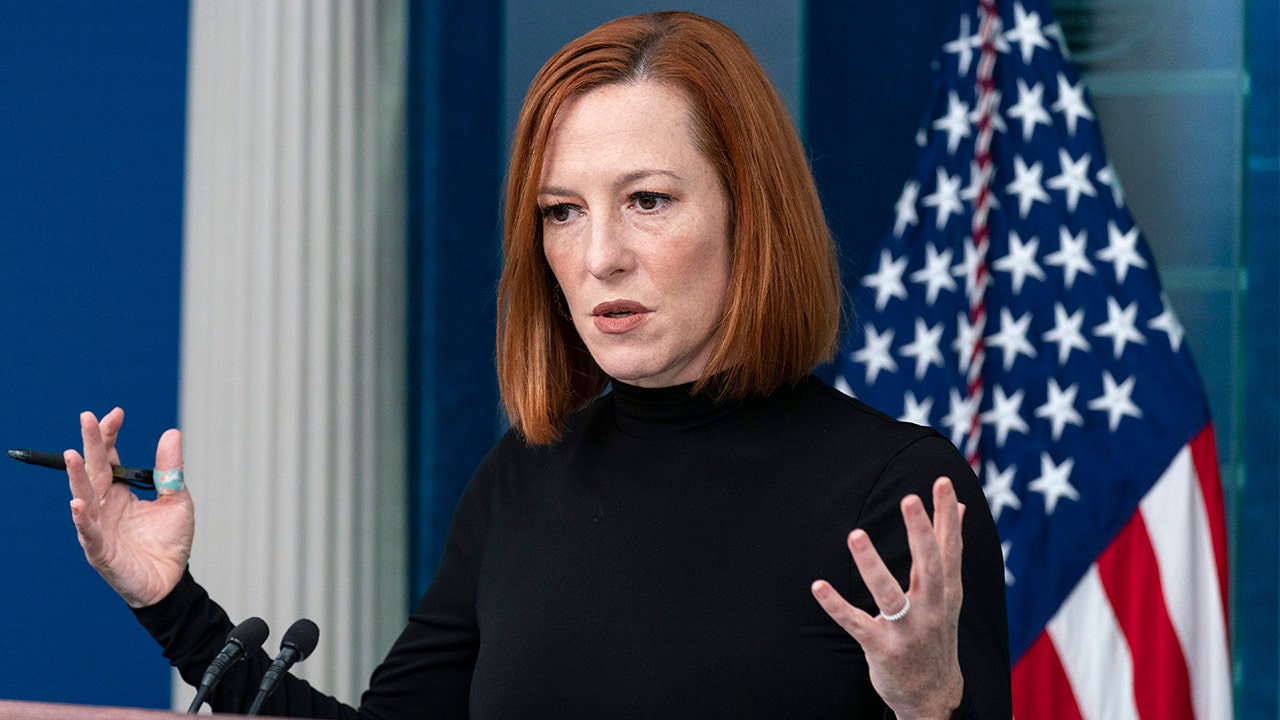Analysis of Media Conduct and its Impact on Sustainable Development Goals
Executive Summary
A recent incident involving former White House Press Secretary Jen Psaki on the “I’ve Had It” podcast has brought to light the degradation of public discourse and its direct conflict with key United Nations Sustainable Development Goals (SDGs). By making light of domestic violence in reference to Usha Vance, the commentary not only violated long-standing broadcast ethics but also actively undermined progress on SDG 5 (Gender Equality) and SDG 16 (Peace, Justice, and Strong Institutions). This report analyzes the incident and the broader trend of polarizing media content, evaluating its negative implications for the 2030 Agenda for Sustainable Development.
Incident Overview and Violation of Media Standards
Background
On a recent episode of the “I’ve Had It” podcast, guest Jen Psaki participated in a segment where she made comments suggesting Usha Vance, a highly accomplished lawyer and public figure, might be a victim of domestic abuse. The remarks were framed as a political jest, urging Ms. Vance to signal if she needed rescue from her husband, a prominent political figure. This occurred on a platform known for its profane and aggressive commentary style, which has a significant online following.
Conflict with Ethical Norms
The incident represents a significant departure from established ethical standards in broadcasting, which historically have treated the subject of domestic violence with gravity.
- Trivialization of Violence: The use of domestic abuse as a punchline or a political tool minimizes a serious societal issue that affects millions annually. This directly contravenes the public interest role of media to inform and protect vulnerable populations.
- Erosion of Guardrails: The migration of discourse to unregulated digital platforms like podcasts has seen the dissolution of norms against profanity, vulgarity, and harmful speech that once governed mainstream media. This trend prioritizes monetization and niche audience engagement over social responsibility.
Implications for Sustainable Development Goals
SDG 5: Gender Equality
The commentary is a direct setback to the objectives outlined in SDG 5, which aims to achieve gender equality and empower all women and girls.
- Undermining Target 5.2: Target 5.2 explicitly calls for the elimination of all forms of violence against all women and girls in the public and private spheres. Mocking or politicizing domestic violence normalizes it, creating a cultural environment that is hostile to victims and counterproductive to elimination efforts. It can discourage victims from seeking help and perpetuates a culture of silence and victim-blaming.
- Impeding Target 5.5: Target 5.5 seeks to ensure women’s full and effective participation and equal opportunities for leadership in political, economic, and public life. Using a highly accomplished woman like Usha Vance—a graduate of Yale Law School and former clerk for two Supreme Court justices—as a prop for a political attack undermines her agency and professional achievements, reducing her to a caricature. This contributes to a hostile environment for women in public life.
SDG 16: Peace, Justice, and Strong Institutions
The incident and the media environment it represents pose a threat to the stability and inclusivity of societal institutions, a core focus of SDG 16.
- Weakening Media as an Institution: Responsible media is a cornerstone of a just and peaceful society. The rise of “insult comedy” and rage-based content for political commentary weakens the media’s institutional integrity. It replaces fact-based discourse with inflammatory rhetoric, eroding public trust and undermining the media’s role in fostering an informed citizenry.
- Obstructing Target 16.10: This target aims to ensure public access to information and protect fundamental freedoms. A media landscape dominated by personal attacks and demonization of political opponents creates a polarized and toxic information ecosystem. This hinders constructive dialogue and the development of inclusive societies where differing viewpoints can be debated peacefully.
SDG 17: Partnerships for the Goals
The broader trend of divisive media content is fundamentally at odds with the collaborative spirit required by SDG 17.
- Eroding Social Cohesion: The 2030 Agenda requires unprecedented cooperation between governments, the private sector, and civil society. Media content that intentionally deepens political divides and fosters animosity makes such multi-stakeholder partnerships more difficult to form and sustain.
- Hindering Collective Action: Addressing complex global challenges like climate change, poverty, and inequality requires a unified effort. A media environment that thrives on conflict and outrage distracts from substantive policy issues and undermines the potential for collective action toward shared sustainable development objectives.
Conclusion
The remarks made on the “I’ve Had It” podcast are not an isolated gaffe but a symptom of a deteriorating media landscape that poses a tangible threat to global progress on the Sustainable Development Goals. By trivializing gender-based violence and promoting divisive political rhetoric, such content directly undermines efforts to build a world that is equal, just, and sustainable. A recommitment to ethical media practices that foster constructive dialogue and respect for human dignity is essential for creating an environment where the ambitious goals of the 2030 Agenda can be realized.
Analysis of Sustainable Development Goals in the Article
1. Which SDGs are addressed or connected to the issues highlighted in the article?
-
SDG 5: Gender Equality
- The article’s central argument revolves around the inappropriate minimization and mocking of domestic violence. It explicitly states, “A standing rule among broadcast professionals is to never minimize or mock domestic violence.” Domestic violence is a primary form of gender-based violence, making SDG 5, which aims to achieve gender equality and empower all women and girls, directly relevant.
-
SDG 16: Peace, Justice and Strong Institutions
- This goal is relevant because it seeks to “promote peaceful and inclusive societies for sustainable development.” The article addresses violence within society (“Over 10 million incidents of domestic abuse are believed to occur annually”). Furthermore, it discusses the erosion of norms and “guardrails” in media broadcasting, which can be seen as a weakening of institutions responsible for disseminating information responsibly and protecting the public from harmful content.
2. What specific targets under those SDGs can be identified based on the article’s content?
-
Target 5.2: Eliminate all forms of violence against all women and girls in the public and private spheres.
- The article’s core subject is domestic abuse, a key component of violence against women and girls. The text highlights the severity and prevalence of this issue, directly aligning with the objective of this target. The criticism of Jen Psaki’s comments for making a “jest” about domestic abuse underscores the importance of treating this form of violence with the seriousness required to work towards its elimination.
-
Target 16.1: Significantly reduce all forms of violence and related death rates everywhere.
- The article’s reference to “over 10 million incidents of domestic abuse” annually speaks directly to the prevalence of violence that this target aims to reduce. The discussion is not limited to gender but addresses domestic abuse as a societal problem, fitting within the broader scope of Target 16.1 to reduce all forms of violence.
3. Are there any indicators mentioned or implied in the article that can be used to measure progress towards the identified targets?
-
Prevalence of Domestic Violence
- The article provides a direct quantitative indicator: “Over 10 million incidents of domestic abuse are believed to occur annually.” This statistic can be used to measure the scale of the problem, which is a baseline for tracking progress towards reducing violence as outlined in Targets 5.2 and 16.1. This aligns with official indicators like 5.2.1 (Proportion of ever-partnered women subjected to intimate partner violence).
-
Rate of Victims Seeking Help
- The article mentions that “victims seeking help less than 40% of the time.” This is a crucial indicator of the effectiveness of support systems, access to justice, and the level of trust victims have in institutions. A low rate of help-seeking implies significant barriers for victims, and an increase in this percentage would indicate progress in providing safe and accessible support services, which is essential for achieving Target 5.2.
4. Table of SDGs, Targets, and Indicators
| SDGs | Targets | Indicators |
|---|---|---|
| SDG 5: Gender Equality | Target 5.2: Eliminate all forms of violence against all women and girls in the public and private spheres. |
|
| SDG 16: Peace, Justice and Strong Institutions | Target 16.1: Significantly reduce all forms of violence and related death rates everywhere. |
|
Source: foxnews.com






